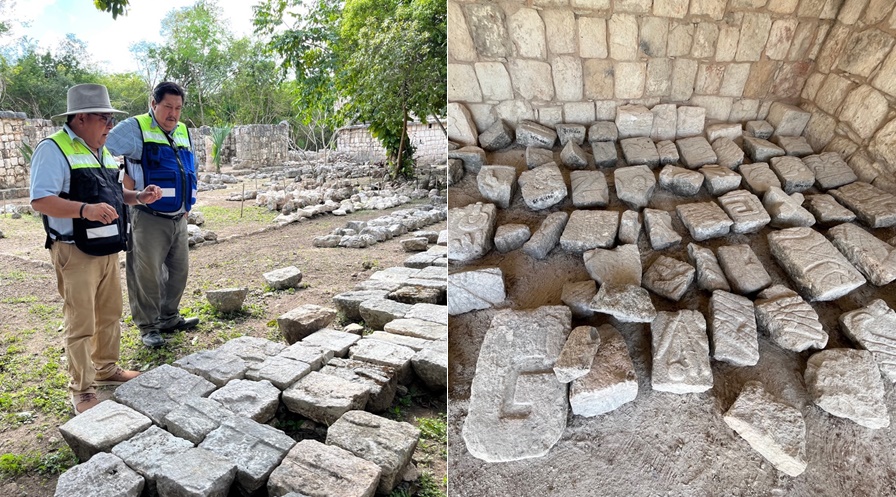Excavation work being carried out in the archaeological zone of Chichen Viejo, located in the state of Yucatan, southeastern Mexico, has uncovered an important discovery: the tomb of an elite personage of the Mayan dynasty of the Canules and the decipherment of symbols in buildings that resemble stone codices.
“In one of the 25 structures in the Initial Series or Chichén Viejo we found calcined human remains that probably correspond to the important personage that resided in that place”, said archaeologist José Osorio León, researcher of the National Institute of Anthropology and History (INAH).
The Mayan tomb was found inside the structure that “had layers of stone, which when lifted defined the space that covered a large square vault in whose interior there was a burnt context and a large amount of remains“.
When doing the registration and analysis five preserved jaws were discovered, “but there were no long bones, everything was burned, it is the only evidence of tomb that we have in the Initial Series“, one of the 13 complexes that are around the ceremonial center of the archaeological zone of Chichén Itzá.
The recovered remains, as well as jade necklaces, spear points, vessels and other objects found in diverse structures of Chichén Viejo “are in safeguard in a conservation area, where they will be investigated“, thanks to the Program of Improvement of Archaeological Zones.
For his part, INAH archaeologist Francisco Pérez Ruiz explained the importance of the Palace of the Phalluses, the House of the Moon, the Turtle, the House of the Snails, the Temple of the Initial Series and other buildings of the 25 in Chichén Viejo, whose development began in 650 to 700 A.D. and flourished in 900 to 1,200 A.D.
“The Palacio de los Falos has symbols that resemble a stone book or stucco codices that reflect passages of the life of the elite character that lived in Chichén Viejo, such as penis bleeding rituals that they also called of fire,” he said.
The rituals, according to the stone codices, were practiced by the ruler to stay in power and as a symbol of fertility, they used stingray thorns to make the penis bleed, whose blood was put in vessels to be offered to the gods.

The so-called stone codices also show richly attired elders carrying snails and turtle shells on their backs, associated with deities known as ahuatunes, “who are the bearers of the cardinal points that were represented by monkeys, bees and snails”.
In the upper part of the Casa de los Caracoles there is also an important symbolism: it shows a mythical character with his masculine attributes that form a vine that worships creation.
In another building on the Poniente side, a mythical character is seen with ornaments and a plume placed on a celestial band, from where a vine comes out that extends throughout the frieze.
“The scene seems to say: “I am the end of this lineage, I am the last divine being and appears next to seated monkeys, woodpeckers and cocoa seeds,” explains the archaeologist during a tour of the Initial Series, which will soon reopen to the public after 25 years.
For his part, the director of the INAH Yucatán Center, José Arturo Chab Cárdenas, confirmed that Chichén Viejo will open this year to promote the development of cultural tourism in the archaeological zone of Chichen Itzá.
“It will be an important trigger for tourism that will arrive through the Tren Maya and although since 1998 INAH has been working in the zone, this 2023 it will indeed open to the public,” he reiterated.
TYT Newsroom


